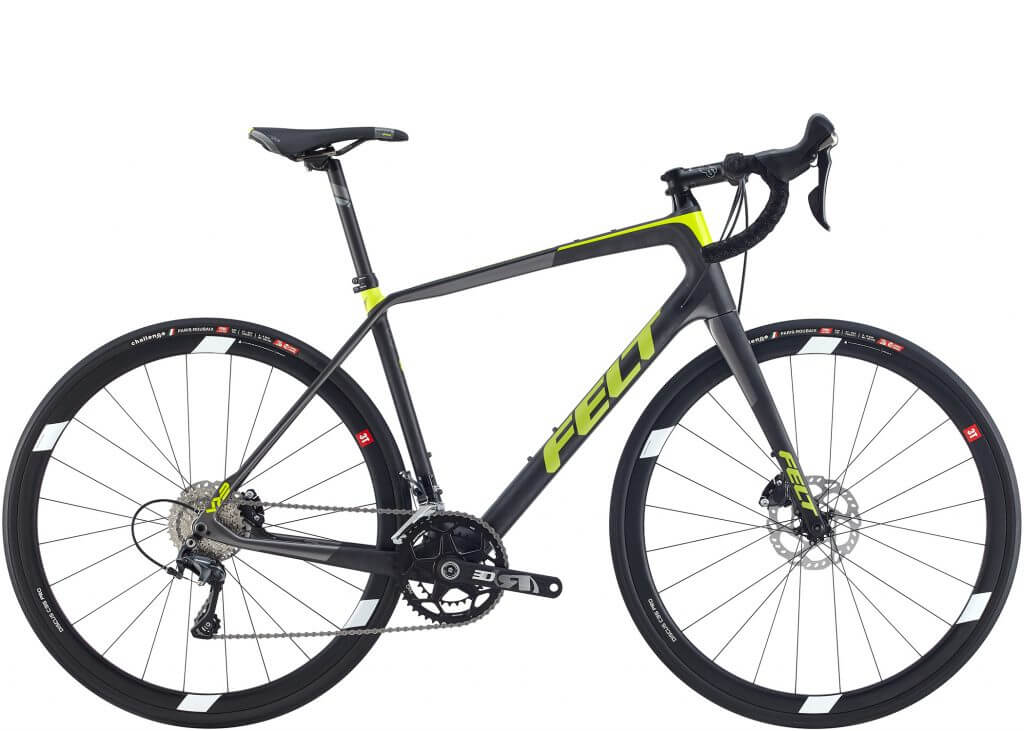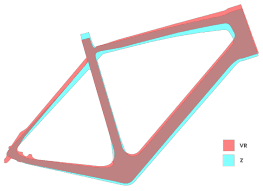Felt VR Bikes – Heart of a Road Bike with Some Adventure Bike Muscle
The bicycle world is changing so rapidly it is hard to keep up at times. Hydraulic disc brakes are appearing on more bikes, as is electronic shifting, but these are not the only developments. Genre’s of bicycles are being blurred; a road bike is no longer just a “road bike”. There are now traditional road bikes with more or less round tubes, aero road bikes with, well, aerodynamically shaped tubing, endurance bikes, and adventure (gravel road) bikes, bike packing bikes as well as a host of related sub-categories. Today, more riders want to have the option of riding on both paved and dirt roads – dirt roads offering less traffic, slower car speeds and variety. As a result, more bike models than ever are designed to bridge the gap between road bikes and adventure bikes. Bike models such as the Cervelo’s line of “C” bikes and the Felt VR bikes are good examples of bikes with the heart of a road bike and some of the muscle of an adventure bike.
 Felt VR – Road and Adventure Bike Crossbreed?
Felt VR – Road and Adventure Bike Crossbreed?
Felt’s VR line of bikes straddle the road/adventure bike divide and I am not sure what to call this developing sub-genre of road bikes! The Felt VR line is very extensive for 2017, with 8 models, ranging from the $899 aluminum-framed VR60 with mechanical disc brakes, to the full carbon fiber VR2 with Shimano Di2 and hydraulic brake, for $5,599. In between are two more aluminum and four more carbon fiber bikes with varying levels of components, plus a carbon fiber frameset that can be built from scratch to match the rider as well as possible. Felt also offers the VRW line of five bikes, which mirror the VR line, but are designed with women in mind in terms of sizing and spec. Two of the VRW bike have aluminum frames, and three have frames of carbon fiber. All of the Felt VR and VRW bikes have disc brakes, of course, as this is a necessity to accommodate the wider tires for which the bikes are designed.
Felt VR Tire Width Options & Compatibility
Aren’t “Adventure Bikes” already more or less across between a road bike and a cyclocross racing bike? The answer to that question is “yes” and “no”, but that is too long a discussion to have here. The name designation “VR” stands for “Variable Road”, and that is indicative of Felt’s intentions with this new line. There are several things that differentiates the new Felt line of VR bikes from what we have come to expect from adventure bikes. For one thing, Felt states that the maximum tire width for this bike is 30mm while the more adventure oriented Felt V bikes from 2016 would accept up to a 40mm in many tires. I tried a wheel with a 32mm wide tire on a Felt VR, and it fit fine, and I have read where others have fit 35mm tires on Felt VR models, but I tried a wheel here in the shop with a tire that measures 35mm, and it did not fit…
Most adventure bikes are designed for tires wider than 30mm, such as 36mm, or in many instances up to 40 mm wide or more. So, the Felt VR offers more tire width options than a standard road bike, but will not accept tires in the widths many of the most gravel capable adventure road bikes like the Moots Routt, Routt 45, or Parlee Chebacco can accept. The ability to accept a tire up to 30mm wide makes the VR line of bikes capable of tackling most of the better maintained unpaved roads we have here in Vermont, thus opening up riding vistas that are usually closed to traditional road bikes that can accept only a 23 mm or 25 mm wide tire. However, if you plan on riding your bike on the Class IV roads we have in Vermont, or roads with very soft surfaces, well, then a 30 mm wide tire, or even a 32, probably will not cut it, and you need a full blown adventure bike.
Felt VR Frame Geometry
T he geometry of the Felt VR line of bikes is also more akin to that of a traditional road endurance bike, meaning that the riding position is a bit more aggressive, not quite as upright, and with overall geometry not as relaxed, as that on Felt’s 2016 adventure bike offerings (V55 and V85). Most of the geometry specifications of the Felt VR bikes fall in-between the two lines that it appears to have replaced – the Felt Z endurance road bikes and the Felt V adventure road bikes. From a stack and reach standpoint, a 54 cm Felt Z has a stack of 561 mm, and a reach of 384 mm, while the VR’s have a stack of 576 mm and a reach of 379 mm. So, the fit on the VR is a bit more upright, and a bit more relaxed, than on the Z line of bikes, but lower and longer than on the V55 and V85, both adventure bikes from Felt that sold very well for us in 2016. So, like I said, the geometry of the VR is a cross between an adventure bike and a road bike.
he geometry of the Felt VR line of bikes is also more akin to that of a traditional road endurance bike, meaning that the riding position is a bit more aggressive, not quite as upright, and with overall geometry not as relaxed, as that on Felt’s 2016 adventure bike offerings (V55 and V85). Most of the geometry specifications of the Felt VR bikes fall in-between the two lines that it appears to have replaced – the Felt Z endurance road bikes and the Felt V adventure road bikes. From a stack and reach standpoint, a 54 cm Felt Z has a stack of 561 mm, and a reach of 384 mm, while the VR’s have a stack of 576 mm and a reach of 379 mm. So, the fit on the VR is a bit more upright, and a bit more relaxed, than on the Z line of bikes, but lower and longer than on the V55 and V85, both adventure bikes from Felt that sold very well for us in 2016. So, like I said, the geometry of the VR is a cross between an adventure bike and a road bike.
Felt VR Conclusion
The Felt VR is a great replacement for the Felt Z series of “endurance geometry” road bikes as they will do most anything the Z series did well, will fit a broader range of people well and offer disc brakes and wider tire options. This is all good and improves on the endurance road aspects of Felt’s offerings. However, we miss the versatility and geometry of the Felt V bikes and wish that the V bike line had been expanded, not discontinued, for 2017. While the 2017 Felt VR bikes will work well for some people that ride the V55 or V85, there will be others where the frame geometry and more limited tire width options will make them look to bikes like the Jamis Renegade line.

